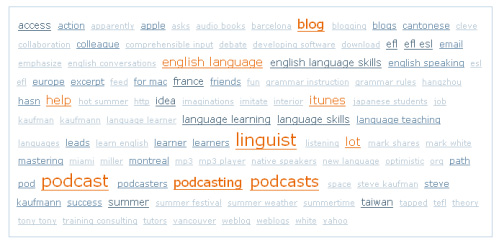Connectivism at work
My most recent entry became a node - it sparked some thoughts in the blogosphere and those, in turn, came back and led me to continue to think about connectivism. Gardner Campbell's ideas are worth noting:
We need to teach students how to make connections. We also need to teach them about other connectors. Great minds, in short ... if you want to learn how to make connections, get very very close to someone whos an ace at it.
This reminds me of what Prensky calls "legacy content" - students need to learn about great minds and the ideas they produced and not just what's online. They also need good teachers, people who are experienced "connectors" - people who will help students discover that Copernicus, for example, connects to the geocentrism of Plato, Aristotle, and Ptolemy but also to the heliocentric view of the universe and to the notion of immanence, subjectivism, intellectual freedom, the Renaissance, and religion in general. Good teachers can lead students from a focus on heliocentrism and planetary mechanics towards a discovery of more interconnected nodes and help them realize that Copernicus had a profound impact on religion and philosophy. Students need to see how the nodes develop into a network and how the network moves us away from pure science and towards ideas that seemingly have very little to do with planetary mechanics. They need to realize that this kind of content ("great minds" or "great books") is not a set collection of facts. True knowledge begins when young people realize that Copernicus is not just a page in the encyclopedia but that he connects to other pages, to other people, other events, other nodes. Only then can they actively begin to connect these nodes, interact with them, and thus create their own network of correspondences. This is how they learn to create their own trajectories of understanding.
This is also how our students can become nodes themselves:
I like the term "connection preparation." How can I prepare my students? I think I have to ensure that they are comfortable with expressive writing (for a good overview of how to accomplish this task, see this article by Joan Vinall-Cox). I think I also need to make sure that they are comfortable using tools that can help them navigate the networks around them and organize their personal knowledge. I also believe that they need to be able to interact with these networks and to contribute to them. Finally, they need the freedom to explore and connect, to co-construct, to learn through discovery. They need to know that the journey takes precedence over the final result.
